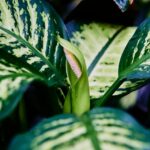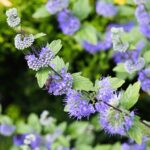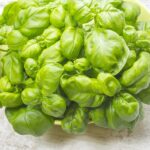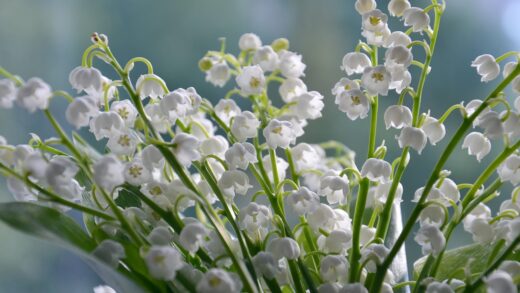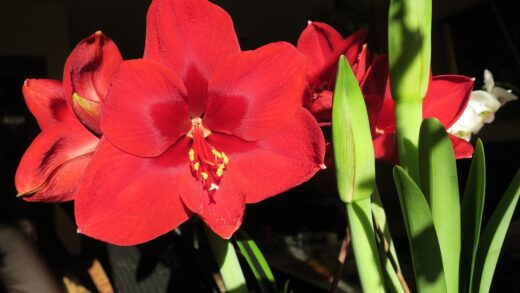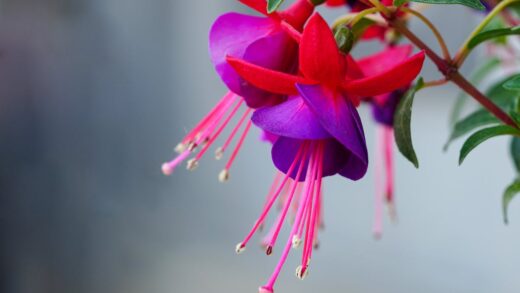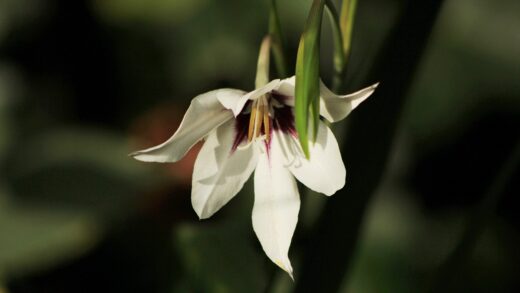For gardeners in climates that experience freezing temperatures, successfully overwintering Brugmansia is a critical annual task that ensures the survival of these tender tropical plants. As natives of South America, they have no natural tolerance for frost, which can quickly damage or kill the plant. The process of preparing and storing an angel’s trumpet for the winter allows it to enter a dormant state, preserving it until the warmth and light of spring return. Understanding the different methods for overwintering and the specific care required during this dormant period is essential for the long-term enjoyment of these magnificent specimens, allowing them to grow larger and more spectacular with each passing year.
Preparing for dormancy
The process of preparing a Brugmansia for its winter rest should begin in the autumn, several weeks before the first anticipated frost date. The goal is to gradually slow down the plant’s active growth and encourage it to harden off in preparation for storage. The first step is to cease all fertilization. Continuing to feed the plant would encourage the production of soft, tender new growth that is particularly vulnerable to cold damage and disease during storage. This signal helps the plant to begin redirecting its energy from growth to storage in its root system.
Concurrent with stopping fertilization, you should also begin to gradually reduce the frequency of watering. While the plant should not be allowed to dry out completely, allowing the soil to become drier between waterings helps to slow its metabolism. This reduction in water mimics the onset of a dry season, which is a natural trigger for dormancy in many tropical plants. It is crucial to strike a balance; the aim is to slow the plant down, not to induce severe water stress, which could weaken it before it goes into storage.
Before bringing the plant indoors, it is imperative to thoroughly inspect it for any pests. Pests like spider mites, aphids, and whiteflies can thrive in the stable conditions of an indoor storage area and multiply rapidly over the winter, severely weakening the plant. Examine the stems and the undersides of the leaves carefully. It is a highly recommended practice to treat the plant proactively, even if no pests are visible. Spraying the entire plant, including the stems and soil surface, with horticultural oil or insecticidal soap can eliminate any hidden pests or their eggs, preventing a major infestation during the dormant period.
The final preparatory step, usually undertaken just before moving the plant to its winter quarters, is pruning. Pruning the Brugmansia back significantly serves two main purposes. Firstly, it reduces the overall size of the plant, making it much more manageable to move and store, especially if space is limited. Secondly, it removes the soft, leafy growth that is most likely to rot or attract pests in a cool, damp storage environment. This pre-storage pruning sets the stage for a clean and healthy dormancy.
More articles on this topic
The pruning process
Pruning a Brugmansia before winter storage is a practical necessity. The extent of the pruning can be quite severe, as the plant will regrow vigorously from the old wood in the spring. A good general rule is to reduce the plant’s overall size by at least one-third to one-half. Use clean, sharp pruning shears or a saw to make the cuts. The primary goal is to create a compact, well-structured framework that will fit into your chosen storage space and be easy to manage.
Focus on removing most of the current season’s green, leafy growth. The main woody stems and branches should be retained as the foundation for next year’s growth. When making cuts, it is often recommended to cut back to a node or a ‘Y’ in the branching structure. This can help to promote a bushier growth habit when the plant reawakens in the spring. For larger, more established plants, this can mean cutting back branches that are several feet long.
It is particularly important to understand the plant’s growth habit in relation to flowering. Brugmansia flowers are produced on new growth that originates from the woody framework. A key feature of the plant’s structure is the first main ‘Y’ that forms on the trunk. As a general rule, you should avoid pruning below this primary ‘Y’ unless you are intentionally trying to retrain the plant into a different shape, as this can delay flowering in the following season. The goal is to preserve the mature, woody structure while removing the bulk of the foliage.
After pruning, it is a good idea to remove all remaining leaves from the plant. This may seem drastic, but it is a very effective way to eliminate any lingering pests or fungal spores. A bare, leafless framework is much less likely to have problems with rot or disease in a cool, dark storage environment. This clean, pruned structure is now ready to be moved into its winter home, where it will rest until the signals of spring prompt it to begin a new cycle of growth.
More articles on this topic
Storage methods and conditions
The most common method for overwintering a Brugmansia is to store it in a dormant state in a cool, dark, and frost-free location. An unheated basement, an insulated garage, or a frost-free shed are all excellent choices. The ideal temperature range for dormant storage is between 5°C and 10°C. In these conditions, the plant will cease all growth and drop any remaining leaves, entering a state of deep dormancy. This method requires the least amount of care during the winter months.
Once the pruned plant is in its storage location, its need for water becomes minimal. The soil should be allowed to dry out almost completely. Over the entire winter, it may only require a very small amount of water once every four to six weeks. The goal is simply to prevent the root ball from becoming completely desiccated, which could kill the roots. Overwatering is the single biggest danger during dormant storage, as it will inevitably lead to root rot in the cool, inactive conditions. The soil should feel dry to the touch for most of the winter.
An alternative method is to overwinter the Brugmansia as a houseplant. This is a viable option if you have a bright, cool room in your home. In this scenario, the plant may not go fully dormant and could retain some of its leaves. It will require more light and slightly more water than a fully dormant plant, but still significantly less than during its summer growth phase. Water only when the top several centimetres of soil are dry. Do not expect it to flower or grow much during this semi-dormant period; the goal is simply maintenance until spring.
For those in marginally hardy zones, it is sometimes possible to overwinter the plant in the ground with heavy protection. After the first light frost has killed the top growth, the stems are cut back to about 15 centimetres from the ground. A thick layer, 30 centimetres or more, of dry mulch such as straw or shredded leaves is then piled over the stump. This insulation can protect the root crown from freezing in areas with mild winters. However, this method is risky and less reliable than bringing the plant into a protected environment.
Waking the plant in spring
As the end of winter approaches, it is time to start thinking about waking your Brugmansia from its dormancy. The timing for this process depends on your local climate and last frost date. Generally, about four to six weeks before you plan to move the plant outdoors, you should bring it out of its cool, dark storage and into a warmer, brighter location. This gradual change signals to the plant that the growing season is about to begin.
Upon moving the plant into the light, give it a thorough watering to rehydrate the root ball. This is often the trigger that stimulates the dormant buds on the woody stems to begin swelling and breaking. As new growth appears, you can gradually increase the frequency of watering, keeping the soil consistently moist but not saturated. This is also the time to begin your feeding regimen. Start with a balanced fertilizer at half strength to provide the nutrients needed for the initial flush of growth.
The new growth that emerges indoors will be tender and not accustomed to the harsh conditions of the outdoors. Therefore, it is crucial to harden off the plant before moving it outside permanently. This process involves gradually acclimating the plant to direct sunlight, wind, and outdoor temperatures. Start by placing the plant in a sheltered, shady spot outdoors for just an hour or two on the first day. Over the course of one to two weeks, gradually increase the amount of time it spends outside and its exposure to direct sun.
Once the danger of frost has passed and the plant has been fully hardened off, it can be moved to its final summer location. At this point, you can resume your regular summer watering and feeding schedule. The plant, having rested and stored energy in its roots all winter, will typically respond with an explosion of vigorous growth, quickly developing into the lush, flowering specimen that makes the effort of overwintering so worthwhile.












